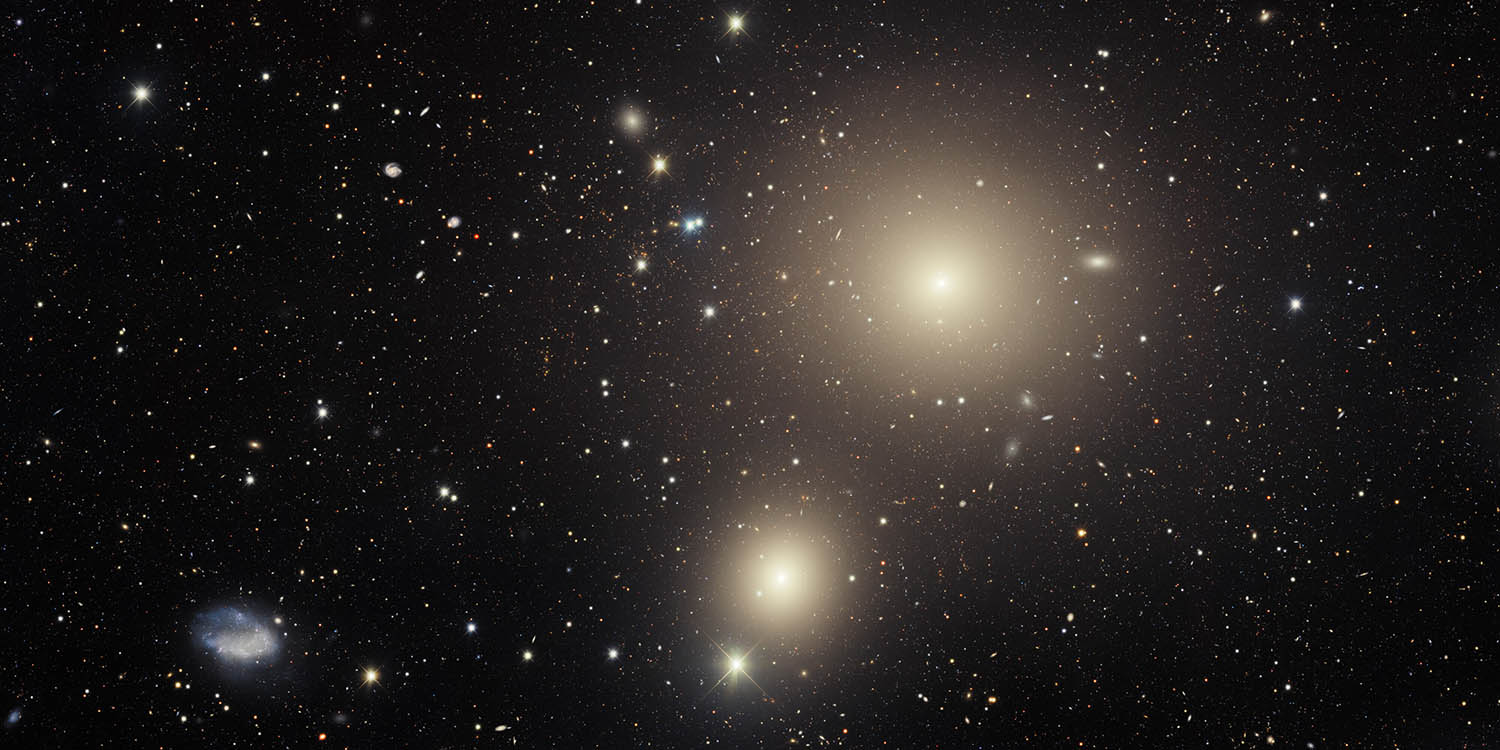NOIRLab: Plunging into the Furnace

Members of the Fornax galaxy cluster fill this image from the Víctor M. Blanco 4-meter Telescope at Cerro Tololo Inter-American Observatory (CTIO), a Program of NSF’s NOIRLab. Appearing in the constellation Fornax (the Furnace), the Fornax Cluster is a relatively nearby galaxy cluster, only about 60 million light-years from Earth. Some foreground stars, which belong to our own Milky Way Galaxy, appear in the image as well. Credit: CTIO/NOIRLab/DOE/NSF/AURA Acknowledgment: Image processing: T.A. Rector (University of Alaska Anchorage/NSF’s NOIRLab), J. Miller (Gemini Observatory/NSF’s NOIRLab), M. Zamani (NSF’s NOIRLab) & D. de Martin (NSF’s NOIRLab)
The denizens of the Fornax galaxy cluster populate this image from the Víctor M. Blanco 4-meter Telescope, located in Chile at Cerro Tololo Inter-American Observatory (CTIO), a Program of NSF’s NOIRLab. The irregular galaxy lurking in the bottom left corner of this Dark Energy Survey image is NGC 1427A, and its headlong plunge into the heart of the Fornax Cluster over millions of years will eventually result in the galaxy’s disruption.
The Fornax Cluster — which, as the name suggests, lies primarily in the constellation Fornax (the Furnace) — is a relatively nearby galaxy cluster, only about 60 million light-years from Earth. This means that it looms large in the night sky, stretching across an area more than 100 times larger than the full Moon. With over 600 member galaxies, the Fornax Cluster is the second “richest” (most populous) galaxy cluster within 100 million light-years of our galaxy (after the much larger Virgo Cluster).
Two elliptical galaxies dominate the center of this image — visible as the two large patches of diffuse light with bright cores. Such galaxies usually contain much older stars than the more picturesque spiral galaxies, and they tend to be found in galaxy clusters such as the Fornax Cluster. These elliptical galaxies — which are named NGC 1399 and NGC 1404 — are among the brightest members of the Fornax Cluster and are inexorably being drawn together by the force of gravity. This interaction is stripping gas from NGC 1404, the lower elliptical galaxy in this image.
In the bottom left corner of the image appears the irregular galaxy NGC 1427A. This ragged patch of light is a small, irregular collection of stars similar to the Large Magellanic Cloud. Similarly to NGC 1404, NGC 1427A is plunging toward the heart of the cluster at roughly 2.2 million kilometers (or 1.3 million miles) per hour. This headlong rush to destruction will eventually result in the galaxy being disrupted — pulled apart by gravitational interactions with other galaxies.
